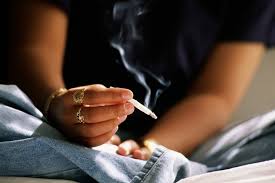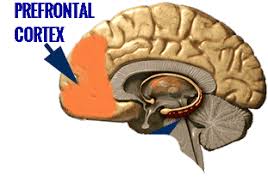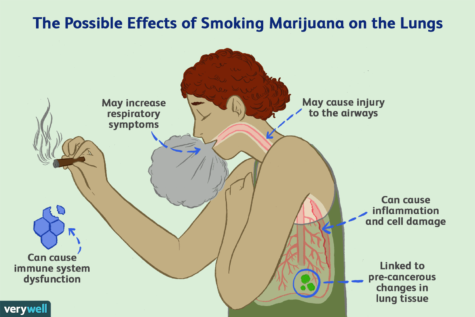Drugs and alcohol in high schools

June 12, 2019
You have been feeling really stressed lately with the three late assignments, two essays, a test next period, and an argument with your friends. You walk into the high school bathroom to take a break, only to find students smoking weed. They catch you staring, only to walk up to you and ask if you want to try it too. You now feel the pressure of all of the students staring at you to take a hit. It looked pretty cool from your perspective because they seemed so relaxed and didn’t have a care in the world. You want to feel this way too, with all of the issues on your plate and also want to be a part of the group as well. As a result, you try it too, not considering the aftermath of your actions. One puff after another, you have now entered a new world possibly surrounded by addiction thinking there is no one to help you.
It is not uncommon to find high schoolers smoking weed in the bathroom, staircase, or even right outside of the school. Drug abuse, smoking, and the use of alcohol is common in high schools across the United States, which has a huge affect on teen health and their learning abilities.
Kids often use drugs due to peer pressure or to deal with stress, depression, or social issues, sometimes leading to addiction. While there are programs in place to educate teens about the potential health risks involved, there are many supporters of a mandatory education program regarding addiction.
Kate Coleridge, a math teacher who is a Psychology major, says that “Even though alcohol is a depressant and you can feel better in the moment, it can ultimately make you feel worse because it is decreasing the stuff in your brain.” To add on, “Anyone’s brain is not fully developed until they are in their mid 20’s so anytime you introduce some sort of substance that’s not naturally occurring, you’re causing brain damage.” Although alcohol and other substances can be used to deal with depression and stress, it will ultimately make the teen’s well-being worse, especially since their brains are not fully developed.
She also believes that “it’s a common time for teenagers to start experimenting with drugs and alcohol, they’re getting more freedom, other people around them are doing it and so I think it’s a natural time for people to start experimenting with things like that.”
One study shows that “Some simply enjoy the physical sensation of getting high because it activates the pleasure centers in their brain. Others use drugs and alcohol as coping mechanisms to deal with stress, depression, social anxiety or emotional problems.”
In addition to why teens may want to try these substances, “Teenagers have a less eveloped prefrontal cortex which is the part of their brain that allows them to engage in risky behavior and decision making,” says science teacher Brittany Klimowicz. She also states “Teenagers just make more risky decisions because of these regions of the brain that are still developing and another piece of it could be cultural. Being surrounded by your peers that are engaging in similar behavior, wanting to fit in with the in crowd. Your own exposure, things that you are exposed to in your family can more often than not influence students’ behavior and they may want to be apart of it in order to be accepted in a group.” Therefore, teen risk-taking and peer pressure could all be a part of why students smoke weed, do drugs, alcohol, etc.
Dayzanae Sample, a sophomore, also agrees that “I think most of them think it’s cool or fun or maybe they just want to fit in.” Although she does not do it herself, Dayzanae is surrounded by students who smoke or use drugs.
Sophomore Nikole Rajgor agrees that people use drugs, smoke, or drink alcohol “…to cope with whatever is going on with their lives and try new things or experience stuff.”
One student who has remained anonymous has in fact smoked in order to cope with things. She states, “There’s times when I feel really messed up and I don’t know what to do and I just feel like doing it. It’s a way to relieve stress and make me feel better when I’m feeling depressed.”
Another student, Kaitlyn, agrees that “It’s fun and I feel like it is a way to cope with my emotions. However, it actually does not seem to help. It just sort of blinds what I’m feeling for a while until the drugs wear off and then I am faced with the same problems again.”
Smoking weed or the use of other drugs sometimes seems to be a way to deal with their feelings when users believe that there is nothing else they can do to help themselves. In addition, “after trying weed or other drugs for the first time I felt like I just needed more and more…It really is addicting. The first time I smoked weed I was not aware of the effects. I was like ‘oh, that looks cool I want to try it.’” These substances can seem like a “cool” activity, but over time can be very addicting.
Sophomore Micah Gomez says, “Especially since we are underage, these actions are illegal. It can actually stunt your growth and probably mess up your head.”
Chi-Chi Ezekwena, a sophomore, says, “I think they do it to seem cool…but honestly it’s kind of stupid in my opinion.” In addition, Chi-Chi states the risks of using drugs or smoking when she says “It can affect your lungs and mess up your whole body. Your brain can malfunction as well as your heart and respiratory system.”
Michelle Leimsider, vice principal at the iSchool, states, “I think that there are a lot of reasons to why students experiment, some of it we know that the adolescent brain-scientifically speaking is much less averse to risk-taking that I think that teenagers are prone to do. I also think that peer pressure has something to do about it because teenagers may think its the cool thing to do.” Furthermore, Michelle Leimsider and Brittany Klimowicz both believe that students are more prone to risk-taking due to underdeveloped brains and also feel pressured to fit in.
In fact, studies have shown that “The rational part of a teen’s brain isn’t fully developed and won’t be until age 25 or so…research has found that adult and teen brains work differently. Adults think with the prefrontal cortex, the brain’s rational part. This is the part of the brain that responds to situations with good judgment and an awareness of long-term consequences.” Since teens are not fully grown yet, using drugs or smoking can cause brain damage, which affects the part of the brain that gives them good judgment.

After feeling the need to want more and more of drugs or marijuana, Kaitlyn’s (as mentioned earlier in the article) parents were very concerned for her, and began teaching her the consequences of her actions by saying that “It’s bad for one’s health and can ruin your brain,” which is evident with the research shown above.
Teens process information with the amygdala,which is an almond-shaped set of neurons that processes emotions. In teen’s brains, the connections between the emotional part of the brain and the decision-making center are still developing—and not always at the same rate. That’s why when teens have overwhelming emotional input, they can’t explain later what they were thinking. They weren’t thinking as much as they were feeling.” This proves that the adolescent brain is not fully developed, which affects their decision-making that leads them to more risky behavior.
A recent CNN report notes that “24 percent of high school teenagers polled admitted to using marijuana in the last year,” and sixteen percent of teens could be categorized as drug abusers. The reward circuit responds to healthy or pleasurable activities which sends messages to the brain to do it again, since it was enjoyable. The brain remembers this activity and gives the person an intense motivation to do the action again, which results in the use of drugs over and over again (addiction).
Other factors that can influence addiction to students include; poverty, poor social skills, aggressive behavior, conflict at home, family history of substance abuse.
Some “Consequences of addiction include brain abnormalities, slowed thinking and impaired learning and memory. It can also deplete the brain of certain chemicals like dopamine and serotonin, sending high schoolers into a prolonged depression and leaving them susceptible for more destructive behaviors.”
It can also cause hyperactivity, mood and personality changes, and disengagement from school. Additionally, marijuana “is also detrimental to developing brains, causing academic trouble, decreased athletic performance, and lowered I.Q. later in life. It also gains popularity because it is cheap…” The use of drugs and alcohol in schools affect their learning abilities which would lead them to a dark future.

James Whittaker, dean at the iSchool, says that “It is affecting their thinking, affecting their sleep, affecting their relationships… the best you can be is sober and aware.”
In regards to drugs and depression, Mr. Whittaker said, “If you’re using at all, it’s going to exacerbate one’s problems and amplify those problems which can lead to serious depression and even suicide.” People are ultimately at their best when sober. Using can worsen one’s mental and physical state.
“Any human being is worse off if they put substances into their body… they’re worse off and are not at their best possible level,” according to Mr. Whittaker.
Other effects of using marijuana include risk of psychosis, school difficulties, lower intelligence, “Mental health problems, such as schizophrenia, depression, anxiety, anger, irritability, moodiness, and risk of suicide.”
Sections of the brain are also affected by the use of marijuana; One part of the brain called the hippocampus manages short-term memory. Marijuana can hinder this part of the brain to recollect recent events.
Drugs known as xanax, lysergic acid diethylamide and adderall are popular among high school students as well.
Xanax is a prescription drug that has a high risk of addiction. It acts as a central nervous system depressant, which wards off feelings of anxiety and panic by decreasing brain activity. People who use Xanax may experience mood swings, from lethargy to anger. Some effects of becoming addicted to Xanax include “Stomach problems like nausea or vomiting, Sight problems like blurred or double vision, Memory problems like amnesia or forgetfulness, Attention problems like lack of focus or confusion, Muscle control problems like lack of coordination and tremors,” and a high risk of death.
Lysergic acid diethylamide, also known as LSD or acid, has very hazardous effects as well. Effects of LSD addiction includes hallucinations, altered sounds, depression, anxiety, rapid heart beat, an increased body temperature and high blood pressure. Overdose can lead to psychosis, which is a loss of touch with reality. Death is usually due to direct injury while using LSD. Physical effects of this drug “include nausea, loss of appetite, increased blood sugar, difficulty sleeping, dry mouth, tremors and seizures.”
Adderall causes nervousness, difficulty sleeping, headache, stomach pain, diarrhea, constipation, weight loss, etc. Some more serious side effects include pounding heartbeat, seizure, shortness of breath, chest pain, minor tics, weakness, fever, hives, etc. Some long-term effects of overuse are “severe rash, insomnia, irritability and personality changes. The most severe symptoms of abuse is psychosis, which is often clinically indistinguishable from schizophrenia, according to the FDA.”
Electronic cigarettes (vaping) and traditional cigarettes are included in the list of drug use as well. Studies show that “E-cigarette aerosols may contain propylene glycol, glycerol, flavourings, other chemicals and, usually, nicotine. Aerosolized propylene glycol and glycerol produce mouth and throat irritation and dry cough.” Vape pens includes nicotine, which is highly addictive. Additionally, “Nicotine is also a toxic substance. It raises your blood pressure and spikes your adrenaline, which increases your heart rate and the likelihood of having a heart attack.”
According to one student, “I remember my mom was telling me she had to get hospitalized after using drugs…for some people it increases your anxiety and makes people really anxious and jumpy and makes your heartbeat a lot. You can actually grow addicted to it.” Drugs are not for everybody, so it can have different effects depending on the person.
One of the main issues among the teens who use drink, use drugs, or smoke weed is that they do not think about the negative effects of their actions.
Michelle Leimsider states, “I think some kids know the harms and some don’t.” This can be true for many students who simply have not been taught about the harms of using any of these substances or those who completely disregard their knowledge and just jump into the action.
Some solutions to prevent students from using these toxic substances is to “Ask what they have heard about using marijuana. Listen carefully, pay attention, and try not to interrupt. Avoid making negative or angry comments. Offer your child facts about the risks and consequences of smoking marijuana. Ask your child to give examples of the effects of marijuana.”
Aside from speaking to a parent or guardian, there could be programs in place in schools that are mandatory in teaching students the risks of substance abuse.
According to Ms. Coleridge, “Access to knowledge and really understanding what they’re doing to their brains can hopefully help people produce a different choice,” which is why more educational programs about drugs could be incorporated into the school system.
Kaitlyn has been put into a school to help cope with her drug problem and says, “I have a lot of resources and I know who to go to if I ever need help. The programs in my school have assisted my through tough times and have taught me how to deal with my emotions without resorting to the use of drugs. It really helps.” The programs and other resources at her school have taught her the harmful effects of using drugs and has overall aided her in her journey to recovery from her past actions. If more educational programs about drug use were incorporated into the public school system, students may make more informed decisions in the future.
In order to help the students with drug abuse, Mr.Whittaker says, “I think spreading awareness and talking to the adults in the building more honestly will really help solve these problems because there are things that the adults know and have gone through with other friends and family members at least for me personally, that I know how to help and we all just really want to help the students that are having trouble communicating with us. We would rather you tell us instead of keeping it hidden because we’re ultimately here to help.” Consulting with an adult could help resolve this issue, especially because the teachers are willing to help in order to watch their students become successful.
Rehabilitation programs like Newport Academy and SAMHSA’s National Helpline 1-800-662-HELP are also known to help individuals facing substance abuse and mental disorders.

